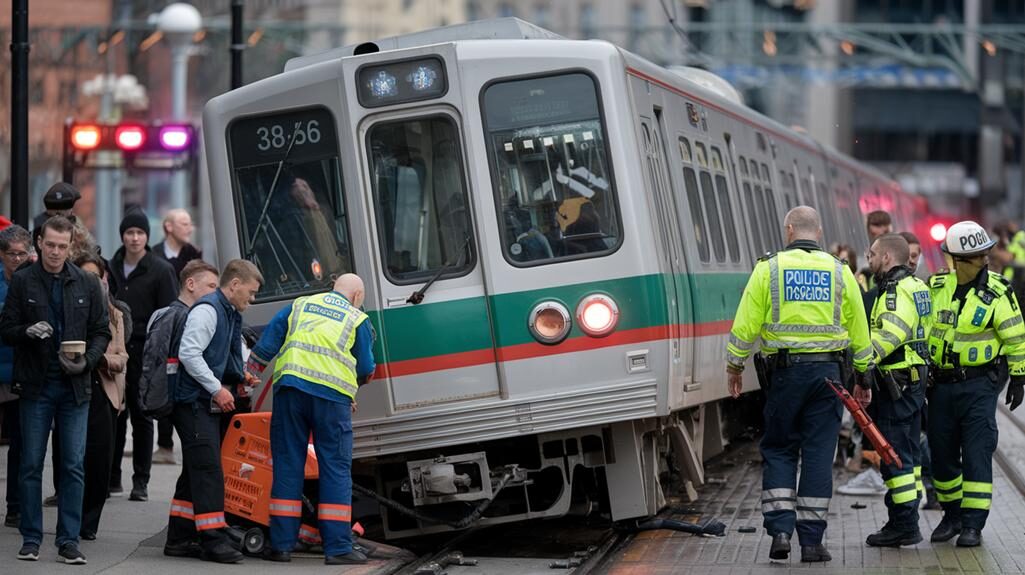LISTEN TO OUR BOSTON CAR ACCIDENT STATS PODCAST
Stay informed about car accident trends in Boston by tuning into our Boston Car Accident Stats Podcast. Our experts break down the latest statistics, analyze key factors contributing to accidents, and provide practical tips to help you stay safe on the road while understanding your rights in case of an accident.
As you drive through Boston, you’re 130% more likely to be involved in a car accident than the national average. According to Jason Stone Injury Lawyers, these statistics highlight the importance of being extra cautious, especially on streets like Massachusetts Avenue and Newbury Street, which are particularly prone to accidents.
Boston streets’ safety varies depending on time, location, and traffic conditions. The city has significantly reduced Boston car accidents through infrastructure improvements and enforcement. Statistics show accident hotspots in high-traffic areas, with trends improving in recent years due to safety initiatives.
If you’re unfortunate enough to be involved in an accident, it’s essential to know your rights and seek the advice of a Boston Car Accident Lawyer.
Looking closely at the statistics, you’ll discover more about the city’s accident trends, safety initiatives, and what you can do to stay safe on Boston’s roads.
Highlights
- Boston drivers face a 130% higher accident likelihood than the national average, with a high frequency of insurance claims.
- The city averages 20 fatal accidents annually, with rear-end collisions accounting for 36.1% of accidents in 2020.
- Distracted driving and aggressive driving behaviors are significant causes of accidents, contributing to 32.3% of crashes.
- Specific streets like Massachusetts Avenue and Newbury Street are particularly accident-prone, with nearly 70% of fatal pedestrian crashes occurring in dark conditions.
- Despite high accident rates, Boston ranks among the top three safest states for fatalities, with safety measures reducing crash severity.
Boston’s Car Accident Rates
Boston drivers are nearly 130% more likely to experience accidents than the national average, with an auto accident occurring every 4.4 years. You’re probably aware of the high accident rate as you navigate Boston’s streets. But what’s behind these numbers? Examining the city’s approach to traffic enforcement and urban planning can provide insight. Boston ranks second in the country for accident rates, with drivers submitting two and a half times more insurance claims than the national average.
You may wonder how city officials are addressing these staggering statistics. Urban planning plays a significant role in mitigating accidents. By designing safer roads and intersections, city planners can reduce the likelihood of collisions. For instance, the Massachusetts Avenue and Melnea Cass Boulevard intersection has seen 124 crashes between 2014 and 2024, making it a prime target for improvement.
Traffic enforcement is also vital in reducing accidents. By cracking down on reckless driving and promoting safe habits, law enforcement can contribute to a safer driving environment. However, as a community-focused individual, you understand the importance of balancing enforcement and education. By prioritizing education and outreach, city officials can encourage drivers to adopt safer habits and reduce the need for strict enforcement measures. Moreover, with Boston being among the U.S. cities with populations over 1 million with the highest accident rates, finding the right balance is particularly crucial. As Boston continues to evolve and grow, it’s important to prioritize innovative urban planning and community-driven traffic enforcement strategies to make its streets safer for everyone.
Causes of Boston Car Accidents
As you navigate Boston’s streets, you must recognize the causes of accidents in the city. You’ll need to be aware of distracted driving risks, such as texting while driving, aggressive driver behavior like speeding and tailgating, and pedestrian safety concerns, including failure to yield the right of way. By understanding these causes, you can take steps to protect yourself and others on the road. According to recent statistics, distracted driving accidents contribute significantly to the total number of accidents in Boston, with an average of 257 cases per year from 2016 to 2019.
Distracted Driving Risks
The city’s streets pose a significant threat to your safety, and one major culprit is the motorist who drives while distracted. You’re more likely to be injured or involved in a fatal accident when drivers take their eyes off the road to check their phones or engage in other distracting behaviors. Massachusetts has enacted a hands-free law to combat this issue, but the data suggests that much work remains.
Over 37,000 hands-free law violations were recorded in Massachusetts in 2024, with a spike in warnings and violations during “Hands-Free Awareness Month” in April. The consequences of distracted driving are severe, resulting in 67 injuries in 2024 and accounting for 9.48% of all fatal accidents in Massachusetts from 2016 to 2020. The state averages 99,000 traffic violations per month this year, emphasizing the need for attentive driving. You can make a difference by staying alert and avoiding distracted driving. By putting your phone away and keeping your eyes on the road, you’re safeguarding your own life and the lives of others. With fines ranging from $100 to $500 for repeat offenses, the state is cracking down on distracted driving, and it’s up to you to take responsibility for your actions behind the wheel.
Aggressive Driver Behavior
Nearly one in three drivers on the road engage in aggressive driving behaviors, putting you and others at risk of being involved in an accident. You’re likely no stranger to aggressive driving statistics, which paint a concerning picture: 26% of drivers switch lanes hastily, 32% make rude gestures, and 80% exhibit significant anger or road rage at least once a month. These shared behaviors, such as speeding in heavy traffic, tailgating, and cutting off other drivers, can have devastating consequences.
In Massachusetts, 1.9 accidents involving fatalities are attributed to aggressive driving per 100,000 residents. Furthermore, 32.3% of accidents are caused by aggressive or careless driving. As someone who values serving others, you can play a role in preventing these incidents. By maintaining a safe following distance, using turn signals, and avoiding confrontations with aggressive drivers, you can reduce the risk of being involved in an accident. By acknowledging the risks and taking proactive steps, you can help create a safer driving environment for everyone on the road. Stay vigilant, stay calm, and prioritize road safety to minimize the risks of aggressive driver behavior.
Pedestrian Safety Concerns
You’ve seen how aggressive driving behaviors put everyone at risk, but pedestrians face unique dangers on Boston streets. Factors like speed, environmental conditions, and demographics all contribute to pedestrian accidents. For instance, the likelihood of pedestrian fatalities increases with higher speeds, and older adults are disproportionately harmed.
Walking in Boston, you should be aware of these risks. Here are four key statistics:
- Speed limits make a difference: Lowering the speed limit from 30mph to 25mph reduces the likelihood of death from 47% to 30%.
- Time of day matters: Over 40% of pedestrian fatalities occur between 5 pm – 10 pm, with 8-9 pm being particularly hazardous.
- Specific streets are hazardous: Massachusetts Avenue, Newbury Street, Boylston Street, and Dartmouth Street are among the most dangerous for pedestrians.
- Dark conditions increase risk: Almost 70% of fatal pedestrian crashes occurred in the dark (before sunrise or after sunset).
Improving pedestrian infrastructure and increasing community awareness are essential steps in making Boston’s streets safer for everyone. Initiatives like Vision Zero Boston and the Safety Concerns Map are working to eliminate fatal crashes and engage residents in street redesign efforts.
Boston Car Accident Fatalities and Injuries by Numbers
Often lost in the discussions about Boston’s street safety are the stark numbers that underscore the city’s ongoing struggle with traffic fatalities and injuries. You might not realize that in 2023, there were 16 fatal accidents in Boston; in 2024, that number increased to 18. In fact, between 2012 and 2019, Boston averaged 20 fatal accidents per year, with numbers remaining relatively steady despite changes in total crashes.
Looking at injury statistics, you’ll see that in 2023, there were 68 severe injuries and 729 minor injuries in Boston. However, statewide data for 2024 shows 1,720 serious injuries and 14,119 minor injuries. In 2022, Boston reported 30 severe injuries and 527 minor injuries. Between 2012 and 2019, the city averaged 1,234 injury accidents per year.
Fatality trends indicate that rear-end collisions are the most common, accounting for 36.1% of accidents in 2020. You’ll also notice that side-impact accidents make up about one out of every five motor vehicle accidents. Distracted driving and drunk driving accidents are significant concerns, with averages of 257 and 131 per year, respectively. Single-vehicle accidents comprise 25.4% of crashes in 2020.
These numbers paint a stark picture of Boston’s struggles with traffic fatalities and injuries. By examining fatality trends and injury statistics, you can better understand the city’s ongoing challenges in ensuring street safety. This knowledge can inform efforts to serve the community and work towards reducing these numbers in the future.
Boston Areas Prone to Car Accidents
Some of Boston’s busiest streets and intersections are notorious for being accident-prone, putting drivers, pedestrians, and cyclists at risk. You’re probably wondering which areas are the most hazardous. Let’s take a closer look at the data.
Boston’s crash hotspots are areas where the city’s unique urban infrastructure and high population density create a perfect storm of accident risk.
Here are 4 of the most accident-prone Boston intersections:
- Massachusetts Avenue & Melnea Cass Boulevard: With 124 crashes from 2014 to 2024, this intersection tops the list.
- Albany Street & Massachusetts Avenue: This busy intersection saw 96 crashes during the same period.
- Harvard Street & Morton Street: With 87 crashes, this area is a hotspot for accidents.
- Cedar Street & Columbus Avenue: This intersection experienced 86 crashes, making it a high-risk area for drivers and pedestrians.
As you navigate Boston’s streets, you must know these crash hotspots. The city’s compact layout, pedestrian traffic, and commercial vehicles contribute to the high accident rates. Urban infrastructure is critical in road safety; improving it can greatly reduce accidents. By understanding where and why accidents happen, you can take steps to protect yourself and others on the road. Stay vigilant, especially in these high-risk areas, and remember that road safety is everyone’s responsibility.
Boston Safety Initiatives and Support
You are part of Boston’s efforts to achieve the Vision Zero Initiative, a plan to eliminate traffic fatalities and injuries by implementing multiple safety measures. When accidents occur, you’ll find various legal support services, including free initial consultations with experienced attorneys who will advocate for fair compensation. By understanding your accident compensation options, you’ll be better equipped to navigate the complex process of securing the support you need.
Vision Zero Initiative Boston
Since its inception, Vision Zero Boston has been working towards a bold goal: eliminating fatal and serious traffic crashes in the city by 2030. You’re part of a community that values the safety of all road users, and Vision Zero’s people-first approach to transportation and community building resonates with you. By designing safer streets for pedestrians, bicyclists, and motorists, Boston aims to change the traffic culture and reduce crashes.
Vision Zero Boston is progressing through education, enforcement strategies, and improved road design.
Here are four key strategies you should know:
- Lower speed limits: Reducing speed limits to 25 mph to decrease the severity of crashes.
- Traffic-calming measures: Implementing speed humps, improving traffic signal timing, and building safer intersections.
- Equitable investments: Focusing on neighborhoods that need traffic-calming measures the most.
- Collaboration: Working with various partners to achieve traffic safety goals.

Legal Support Services
As you navigate the complexities of car accidents in Boston, it is essential to understand the legal support services available to victims. You have statutory rights to seek compensation for your injuries, and you can file claims with insurance companies. If necessary, you can pursue legal action to guarantee fair compensation. Seeking legal representation can help you navigate the claim process and build a strong case. A lawyer can assist you in gathering evidence at the accident scene, which is vital for supporting your claim.
Prompt action is necessary to preserve evidence and meet legal deadlines. Your lawyer can help you take time-sensitive actions to ensure you receive the compensation you deserve. By understanding your rights and seeking legal support, you can focus on recovering from your injuries while your lawyer handles the complexities of your case. Don’t hesitate to seek help; legal representation and evidence collection are key to securing fair compensation for your injuries.
Accident Compensation Options
Boston’s complex system for addressing car accidents extends beyond legal support services, including various accident compensation options. When you’re involved in a car accident, understanding the compensation options available can make a significant difference in your recovery.
As you explore these options, you’ll want to know what you’re eligible for. Compensation eligibility depends on several factors, including insurance requirements and the accident’s circumstances. Here are a few key things to take into account:
- Victim compensation funds: If the at-fault driver doesn’t have insurance or it’s a hit-and-run, you can tap into Massachusetts’ victim compensation funds.
- Liability insurance: Drivers in Massachusetts must have liability insurance to cover victims’ expenses in an accident.
- At-fault insurance claims: If the driver has insurance, you can file a claim with their provider.
- Government programs: In some cases, government programs may offer additional compensation for specific accidents.
Boston Accident Trends and Projections
While maneuvering Boston’s streets, you’re likely to encounter many hazards contributing to the city’s accident trends. As you investigate the accident statistics, it becomes clear that certain patterns emerge. For instance, rear-end collisions account for 36.1% of all accidents, while side-impact accidents make up one in five crashes in Boston. You’ll also notice that single-vehicle accidents comprise 25.4% of crashes.
A closer examination of the data reveals that distracted driving and drunk driving are the leading causes of accidents, with 257 and 131 accidents per year, respectively. You might be surprised to learn that Massachusetts Avenue and Melnea Cass Boulevard are one of the most accident-prone locations, with 124 crashes from 2014 to 2024.
Looking ahead to future projections, 2024 shows a decrease in total accidents compared to 2023. However, fatal accidents remain a concern despite the overall decrease. It’s crucial to recognize that improving road design and visibility can reduce accidents. Enhanced public awareness campaigns are also necessary to combat distracted and drunk driving. By consulting accident statistics and future projections, you’ll better understand the city’s accident trends and the significance of continued safety measures. By working together, we can aim towards creating safer streets for everyone. With accident statistics and projections in mind, you can play an important role in promoting road safety and reducing the number of accidents in Boston.
Boston Road Safety Improvements Over Time
You’ve examined the accident trends and projections in Boston, and now it’s time to explore how road safety has improved over time. Despite a recent shift towards more crashes, Boston has seen a steady improvement in car safety and fewer fatalities observed historically. To better understand this progress, let’s investigate some key developments that have improved road safety in Boston.
Here are 4 key road safety improvements in Boston:
- Increased use of traffic calming measures: Boston has implemented various traffic calming measures, such as speed bumps and narrowed traffic lanes, to reduce speeding and aggressive driving.
- Advances in road safety innovations: The city has leveraged technology, like smart traffic signals and crash detection systems, to enhance road safety and respond to accidents more efficiently.
- Improved public awareness campaigns: Public awareness campaigns have been launched to educate drivers, pedestrians, and cyclists about safe road behaviors and the importance of wearing seatbelts.
- Enhanced enforcement of traffic laws: Boston has increased enforcement of traffic laws, including those related to distracted driving, speeding, and drunk driving, to prevent accidents and promote a safety culture.
According to the Insurance Institute for Highway Safety, these efforts have contributed to Boston’s improved road safety record, with the city ranking among the top three safest states for fatalities. By continuing to invest in road safety innovations and traffic calming measures, Boston can further reduce accidents and create a safer transportation environment for all.
Safe Driving Practices for Boston
Adopting safe driving practices is essential to reducing your risk of being involved in an accident as you navigate Boston’s streets. By cultivating responsible habits, you’ll protect yourself and contribute to a safer community.
| Safe Driving Practices | Benefits |
|---|---|
| Avoid distracted driving | Reduce risk of accidents and near-misses |
| Wear seat belts and restraints | Decrease crash severity by 50% |
| Maintain a safe following distance | Prevent rear-end collisions |
To drive safely in Boston, you should know the city’s unique challenges. For example, many accidents involve pedestrians, so it’s vital to exercise caution near vulnerable road users. Additionally, intersections like Massachusetts Avenue & Melnea Cass Boulevard and Albany Street & Massachusetts Avenue have high accident rates, so be extra vigilant when driving through these areas.
Conclusion
You’ve seen the stats: Boston’s car accident rates are a concern. You know the causes, from distracted driving to speeding and the areas prone to crashes. But you also know that the city’s taking steps to improve road safety. By staying informed and practicing safe driving habits, you can reduce your risk of being involved in an accident. Stay vigilant, follow the rules, and let’s make Boston’s streets safer for everyone.
Not Trusting What You’re Being Told?
Better Phone Stone
800-577-5188
 START MY NO OBLIGATION CONSULTATION
START MY NO OBLIGATION CONSULTATION










